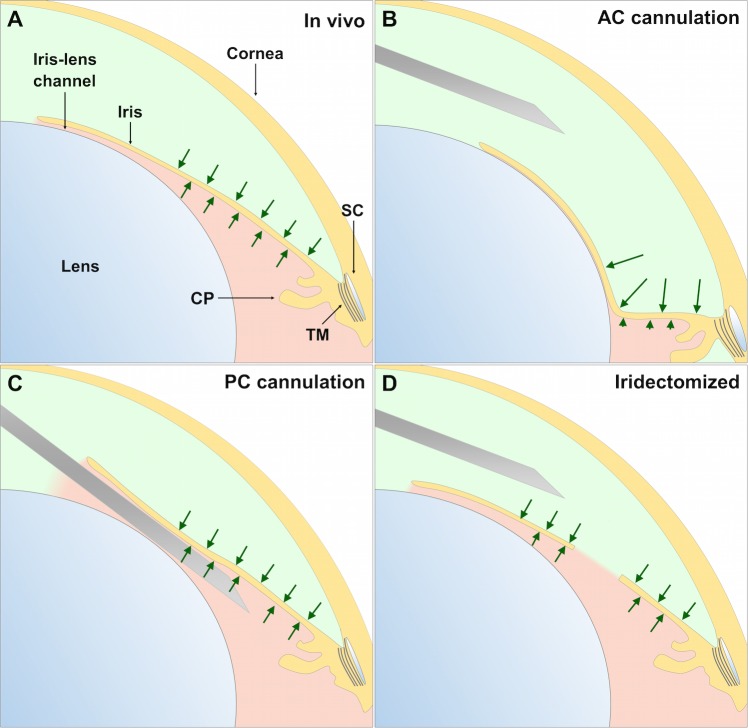Figure 6.
An illustration of the mechanism of AC deepening and strategies to eliminate AC deepening in mice. Light green indicates AC and light pink indicates the PC. (A) In vivo there is no pressure difference across the iris (indicated by equal sized arrows), as aqueous humour secreted from the ciliary processes (CP) passes from the PC to the AC through the iris–lens channel. (B) Perfusion via the AC elevates the pressure acting on the anterior surface of the iris relative to that in the PC (arrow length implies magnitude), inducing posterior bowing of the iris and collapse of the iris–lens channel. Deformation of the iris applies traction to the trabecular meshwork, artifactually increasing outflow facility. (C) Perfusion via the PC emulates aqueous humour secretion and allows the iris–lens channel to remain open throughout its entire circumference. (D) Surgical iridectomy produces an artificial shunt between the AC and PC, equalizing the pressures, and thereby negating AC deepening. Needle scaled by approximately 1:3 for clarity.

